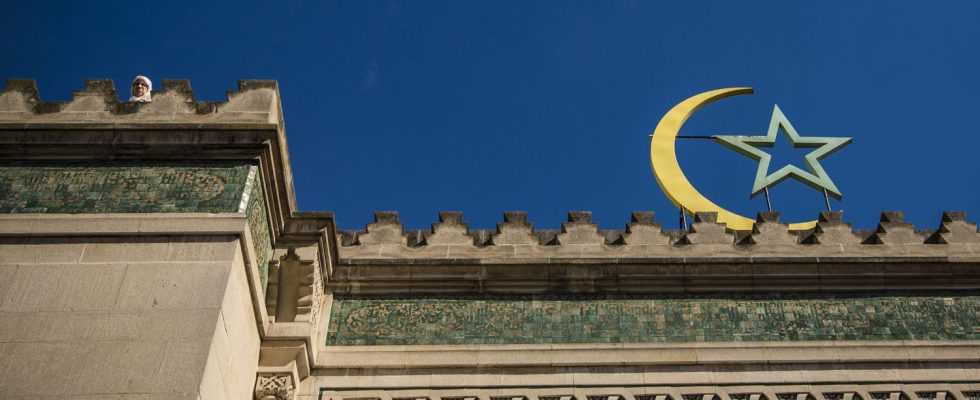This month of fasting will end on April 10 with the feast of breaking the fast, Eid el-Fitr. The Grand Mosque of Paris and the French Council of Muslim Worship announced the same date but used two different methods to set it.

Published
Reading time: 3 min

While the French Council of Muslim Worship affirmed from the 1er april, “in accordance with scientific data”, that Eid el-Fitrthe festival which marks the end of the Ramadan, will take place on Wednesday April 10, the Grand Mosque of Paris, itinsists on his attachment “to the tradition of the Night of Doubt in France”. She consists of observing the sky with the naked eye to detect the new moon, thus marking the end of a lunar month. Ramadan corresponds to the ninth month of the Islamic calendar. This month of fasting ends on the first day of Shawwal, the tenth month.
Thus, the Grand Mosque of Paris refused to announce an official date for the end of Ramadan before the sighting of the lunar crescent. A religious commission dedicated to this purpose met Monday April 8 at the end of the day and also set the date of April 10. “The Night of Doubt is much more than a simple observation of the sky in search of the crescent moon”, wrote on April 2 in a press release Chems-eddine Hafiz, rector of the Grand Mosque of Paris.
Ocular method versus scientific method
“Two visions oppose each other”, concedes Monday April 8 on franceinfo, Mohamed Moussaoui, co-president of the French Council of Muslim Worship (CFCM) and president of the Union of Mosques of France. He notes that the Grand Mosque of Paris maintains a method “ocular” while the CFCM decided to base itself on astronomical data. This decision was made on May 9, 2013 during a conference organized in Bagnolet (Seine-Saint-Denis). A resolution was made “for the establishment of the lunar calendar based on astronomical calculation”. Mohamed Moussaoui emphasizes that it was signed by Dalil Boukabeur, at the time rector of the Grand Mosque of Paris.
The co-president of the CFCM defends a more precise method making it possible to determine “the exact time within a few seconds of the conjunction, that is to say roughly at the moment when the Earth, the Moon and the S“The sun is aligned, making the Moon invisible to any observer regardless of its position on the Earth. He explains that the “new moon is not visible to the naked eye for at least ten hours after its birth”. However, he insists, “tools, which have nothing to do with the Muslim religion, used by all astronomy enthusiasts, make it possible to tell when the new moon will be visible. No need to wait until the day before for the next day.”
A “ritual” against a “theologically tenable method”
But for the rector of the Grand Mosque of Paris, “reducing the Night of Doubt to a date which validates, in Islam, since the observation of the sky and the appearance of the first crescent Moon, both the beginning and the end of the month of Ramadan, is to take away from this ritual all its spiritual and religious dimension”. In his press release, Chems-eddine Hafi adds that‘”ignore tonight under the pretext that modern technology allows us precise calculations would be like neglecting the call to prayer simply because we have watches or connected devices.
Mohamed Moussaoui retorts that, already, “Muslims when they do not hear the muezzin’s call to prayer, return to their calculation-based calendars and check the time on their watch or phone“. He also argues that Muslims in France, for example, “need to know the date of Eid early enough to be able to take a day off” to celebrate the end of the fast.
Then, the co-president of the CFCM estimates “that we must provide ourselves with means of observation with commissions equipped with telescopes all over the country”. However, he continues, “the Grand Mosque of Paris did not do so. They will meet in an office and make an arbitration based on the announcements of the different Muslim countries which use mathematical calculation. He therefore maintains that “this scientific method is theologically tenable”.
